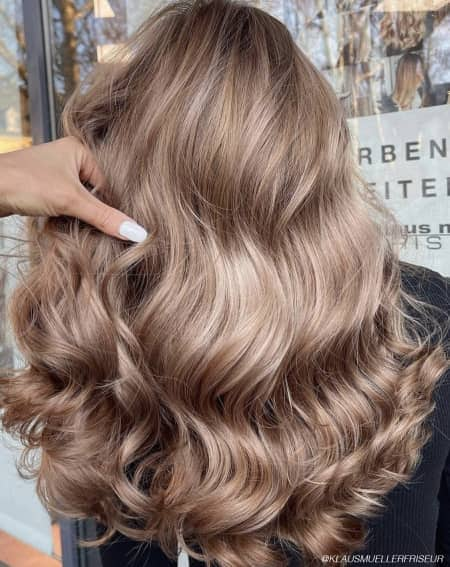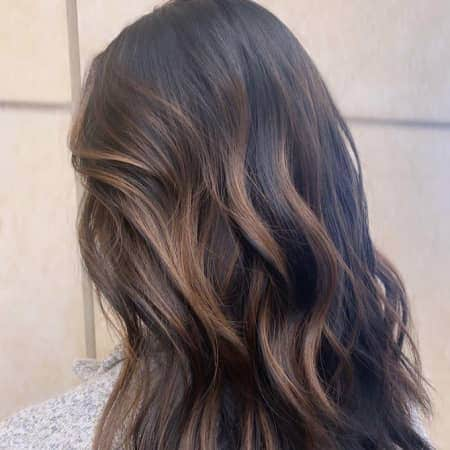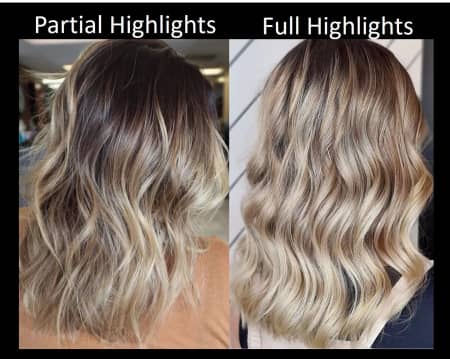What's the Difference Between Partial and Full Highlights?
With spring in full bloom, it's time to give yourself a new hairstyle. Many people are interested in all highlights these days and want highlights to add interest to your hair. No doubt this is a hot issue, but do you know if you want partial highlights or all highlights? What's the difference between partial highlights and full highlights? We'll explain how to get each look, and how to determine which one might work best for you and of course both!
A Brief Introduction of Highlights
Highlights are a favorite styling solution for many people. That's why over the years of their existence, stylists have come up with countless variations of highlights to suit any taste and to finish off any face shape and hairstyle. Generally speaking, highlights are the lighter strands of hair. babylights, balayage, and chunky, partial, and full highlights are just a few examples! partial and full highlights are what we're going to focus on today, so let's see how they differ.
What Are Full Highlights?

As the name implies, full highlights cover all of the hair. Full highlights are a perfect option for those who like consistent hair color and don't want to show off their natural tones.
This may transform your hair or make it more striking, such as going from brunette to blonde. They provide a more dramatic look because they wrap around the head, such as perfect balayage, multi-dimensional full foil highlights, or a mix of partial and full highlights. When this is all done, the color will look great, no matter how you wear your hair.
Advantages of Full Highlights
◆ Color consistency
◆ Complete makeover without bleaching all hair
◆ Multiple options to choose from
◆ Perfect for fine hair: hair looks more textured and layered with full highlights.
◆ Versatile: Whether you're going half up, half down, braiding, or changing the texture from curly to straight, the color will look great.
Disadvantages of Full Highlights
◆ Higher cost
◆ More potential hair damage compared to partial highlights
What Are Partial Highlights?

Partial highlights cover only a specific part of the hair, such as the first few strands of hair near the face, or only the topmost layer of hair, while the part underneath is usually uncolored. Partial highlights are often used for those who want warmer highlights and those who are looking for a more natural look.
This is useful for a quick highlight or root touch-up if you part your hair in the same way every day, and it's a great option for introducing how to add some color to your hair. Many people decide to opt for partial hair highlights because they like the way their natural hair color is seen through the highlighted strands.
Advantages of Partial Highlights
◆ Less potential damage because it bleaches less hair.
◆ More affordable than all highlights.
◆ Works well with any hair color
◆ Looks more natural: Because you'll still see undertones, partial highlights look softer and more natural.
◆ Low maintenance: New growth is less noticeable with partial highlights than with full highlights.
Disadvantages of Partial Highlights
◆ Impossible to be "all blonde"
◆ When you put your hair up, most of the color is invisible
Partial Highlights vs. Full Highlights

Partial and full highlights are two techniques used in hair coloring to add dimension and brightness to the hair. The main difference between the two is the amount of hair that is colored.
Partial highlights typically involve coloring only a portion of the hair. This may include the top layer of the hair, the crown, or just the sides and back. The result is a subtle, natural-looking highlight that adds depth and dimension to the hair.
Full highlights, on the other hand, involve coloring the entire head of hair. This technique is used to create a more dramatic look and can involve a wider range of colors and shades.
Another difference between partial and full highlights is the amount of time and effort required to achieve the desired result. Partial highlights can usually be done more quickly and require less maintenance than full highlights, which may require more time and effort to maintain their color over time.
Partial Highlights vs Full Highlights: Which One to Choose?
In general, if you're looking for a cheaper, easier-to-maintain option that's healthier for your hair, topical highlights are recommended. However, if you want color consistency and aren't afraid to spend more money, you can go for full highlights.
Another reason to choose full highlights may be that you want to transition from dark hair to less damaging blonde hair. Or when the back of the head in a ponytail starts to look too dark, it's time for full highlights. Full highlights are more of a high-maintenance color and stay intact very well to keep your hair color up to date at all times.
Experts on the subject even recommend spacing out and interchanging your highlights, which can help maintain the integrity of your hair and give the different sections time to breathe and heal before going in again, especially for people with long hair. For example, after you've done three partial highlights, you can do one full highlight.
The Final Takeaway
Ultimately, the choice between partial and full highlights will depend on your personal preferences, the look you want to achieve, and your hair type It's always best to consult with a professional stylist to determine the best approach for your hair.
Read More
Partial vs Full Balayage, a Detailed Guidance for You
